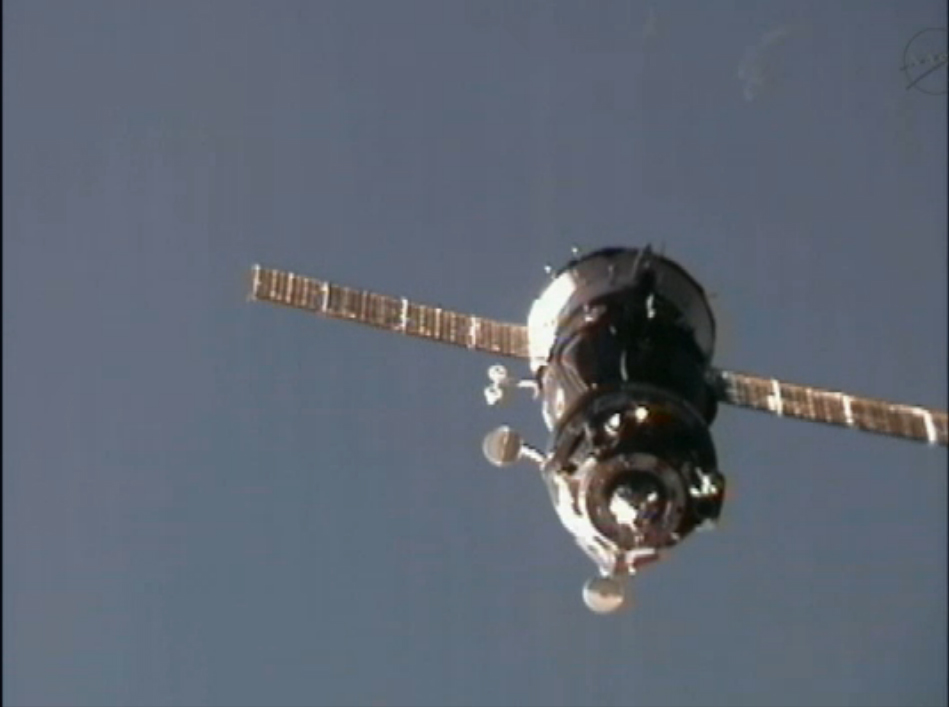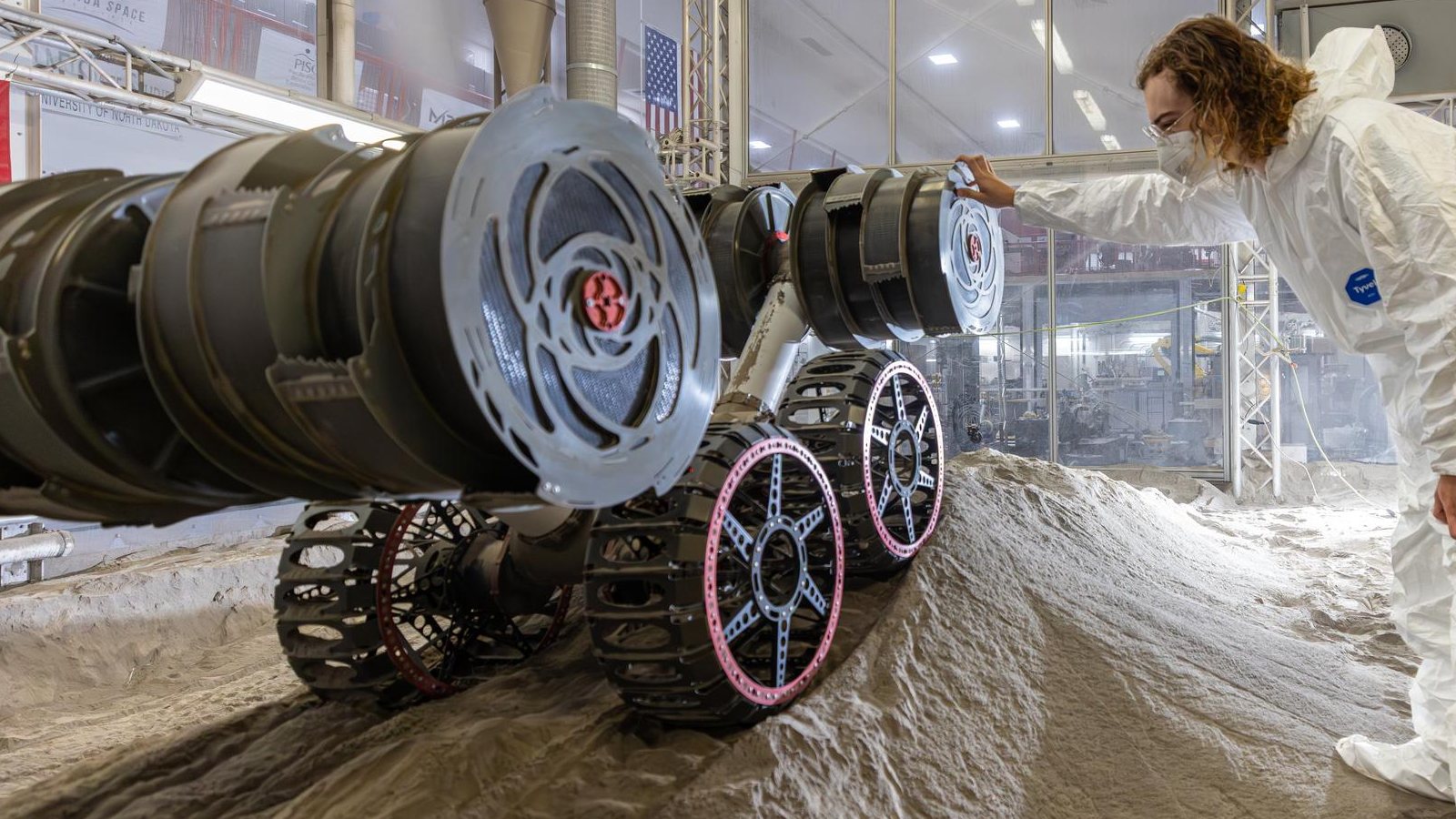3 Astronauts Arrive at Space Station for the Holidays

This story was updated at 1:28 p.m. EST.
Three astronauts arrived today (Dec. 23) at the International Space Station just in time for a zero gravity holiday party as they begin a five-month stay in orbit.
NASA astronaut Don Pettit, Russian cosmonaut Oleg Kononenko, and Dutch astronaut Andre Kuipers of the European Space Agency (ESA), docked at the orbiting laboratory today at 10:19 a.m. EST (1519 GMT) as the two spacecraft sailed 240 miles over southern Russia. They arrived aboard a Russian Soyuz spacecraft, which launched Wednesday (Dec. 21) from Baikonur Cosmodrome in Kazakhstan.
"The Soyuz crew arrives down the chimney of the space station with an early Christmas present for the station's crew," said NASA spokesman Rob Navias during the televised space rendezvous.
Waiting aboard the space station are their crewmates, commander Daniel Burbank of NASA and flight engineers Anton Shkaplerov and Anatoly Ivanishin of Russia. With the new crewmembers' arrival, the space station is fully staffed.
All three newly arrived astronauts are space veterans, and have visited the station before. The new crew was greeted with warm hugs by the three men aboard the space station.
Get the Space.com Newsletter
Breaking space news, the latest updates on rocket launches, skywatching events and more!
"I feel like I'm back home," Pettit told his wife Micki and 11-year-old twin boys Evan and Garrett via a video call from the station. "I promise to write often."
"We wish you good luck on your flight and merry Christmas," Evan said.
In between their busy work conducting science experiments in microgravity and maintaining the space station, the six spacemen will celebrate the holidays in orbital style. Burbank, Shkaplerov and Ivanishin have already decked the station's halls with festive decorations, and were just waiting for the new trio to stage a holiday feast. [Holidays in Space: An Astronaut Photo Album]
"With their arrival, ISS will be back at full strength but we'll also have three good friends to join us," Burbank said in a holiday greeting video he sent from space. "We'll also have them just in time for the Christmas and new years holidays. We'll celebrate the holidays in great fashion after they get here."

Commercial spaceship arrival
Early in the new year, the station crew will begin preparing for a milestone event: the first arrival of a commercial spaceship at the ISS.
The unmanned Dragon space capsule, built by private company SpaceX of Hawthorne, Calif., will make a cargo delivery to the station in early February. Dragon has already flown on one test flight to orbit, but this mission will be the vehicle's first trip to the space station.
SpaceX is developing Dragon under a NASA program to stimulate the growth of commercial spacecraft to take over the duties of the retired space shuttle fleet. Dragon will begin by carrying supplies, and if all goes well, the vehicle will eventually carry astronauts to the space station as well.
For this test mission, Dragon will launch on a SpaceX Falcon 9 rocket and autonomously rendezvous with the space station. Once within reach, the station crew will grab onto the capsule with the space station's robotic arm and berth it to the outpost.
"I think that it's really a great idea to engage more companies participating in the space program, that contribute to the manned space program in particular," Kononenko told SPACE.com in a preflight interview. "The only thing that I would like to emphasize is that I would like these commercial vehicles to be absolutely safe."

Greetings, Earthlings
While in space, the astronauts plan to stay in touch with friends and family, and even the public, through technology. In addition to regular calls and emails home, the spaceflyers will use social media to share their experiences.
"I'm planning to use Twitter," Pettit said in a press conference before the launch. "I have a hard time saying anything in less than 140 characters. I'm still groping with how can I use that kind of medium." He also plans to blog, he added.
The crew's Expedition 30 mission aboard the space station will be particularly followed by people in the Netherlands. Kuipers is only the third Dutch astronaut to travel to space, and the first to do so twice.
"A bit to my surprise, there's a lot of attention again," Kuipers said. "This is my second flight. To small countries, of course, the flight of a national astronaut is a big thing."
You can follow SPACE.com assistant managing editor Clara Moskowitz on Twitter @ClaraMoskowitz. Follow SPACE.com for the latest in space science and exploration news on Twitter @Spacedotcom and on Facebook.
Join our Space Forums to keep talking space on the latest missions, night sky and more! And if you have a news tip, correction or comment, let us know at: community@space.com.

Clara Moskowitz is a science and space writer who joined the Space.com team in 2008 and served as Assistant Managing Editor from 2011 to 2013. Clara has a bachelor's degree in astronomy and physics from Wesleyan University, and a graduate certificate in science writing from the University of California, Santa Cruz. She covers everything from astronomy to human spaceflight and once aced a NASTAR suborbital spaceflight training program for space missions. Clara is currently Associate Editor of Scientific American. To see her latest project is, follow Clara on Twitter.
